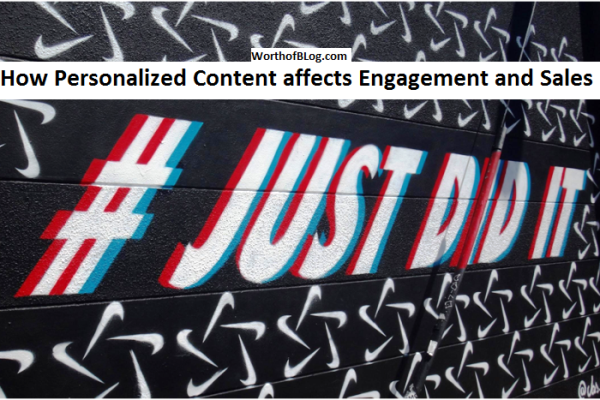If you want to know how personalized content affects engagement and sales, check out here and learn the best tips to increase customer engagement and sales.
Surveys actually show that 57% of consumers are willing to voluntarily share personal data if it results in more personalized offers or discounts from businesses. This personal data helps you drive engagement and increase your sales when utilized right.
Building buyer personas and creating content that specifically targets those personas can help you drive more engagement and help you increase conversion rates.
How…..?
Here is the reason behind how personalized content affects engagement and sales.
How Personalized Content affects Engagement and Sales
Personalized marketing seeks to understand what drives users to buy certain products and services – what is important about a certain product to a specific individual.
They use that data to highlight the features that would be most attractive to them.
Here’s an example:
Two people might be interested in the same crossover SUV: a mother of 3 small children and an avid lover of the outdoors.
- The mom might be most interested in safety features, cargo capacity or features that make it easier to get car seats in and out of the car.
- The nature lover might be more interested in the all-wheel drive, sports rack and towing capacity.
While of course two different campaigns can be created to appeal to those different demographics, personalized marketing goes even further.
For instance, demographics may show that female car buyers with children purchase tan or beige vehicles more often than any other color, so any ad campaign targeted at women with children will feature a tan or beige vehicle.
Personalized data collection, however, may show that this particular mom almost invariably orders items in red whenever there is a color option.
So the marketing that pops up on her browser will show a red SUV. So how do you begin personalizing content?
See also– How You Can Improve Your Business By 30% Using Online Surveys
1. Content Audits
It is estimated that by 2020 there will be in excess of 21 billion connected devices in use. All of these devices are poised to generate an absolute avalanche of consumer data, which will give an almost unprecedented look into the patterns and habits of individual consumers.
Until then, however, businesses actually have access to a mass amount of consumer data right on their own websites. The way they access this information is through content audits.
Content audits can seem overwhelming to even the most seasoned marketers and bloggers, but they are an invaluable tool in personalizing content. The point of a content audit is to determine what kinds of content clients and consumers are interacting and engaging with.
Even more important is the ability to determine which clients and consumers are engaging with which content. This is the beginning of personalization. Perhaps even more telling is that analytics now have the power to track an entire user’s journey online.
Content audits can tell you many things such as what information is most critical in creating conversions. And how many times a specific user accessed a site or content before making a purchase. Besides that, you can also know even how long they spent on a site before converting. 95% of first-time users are not ready to buy.
Content audits can tell you how long it is generally taking them and what the turning points. So that you can capitalize on them.
2. Building Profiles
Armed with the massive amount of data that a content audit can generate, you can begin to build personal profiles of your users.
Taking the time to build individual user profiles can be a time-consuming task. So you want to be sure you are truly maximizing the sales potential of that information.
See also– How to get Local Business Reviews
3. Creating Targeted Content
Once you have built all the profiles, it is time to create content for every single one. You will want to use a comprehensive system like Office 365 to create that content, and their built-in content sharing service OneDrive to store all the content on an easily accessible location.
This way, everyone working on content creation can add and access files, which is important as new insights into personas. And the buyer’s journey might change the approach towards specific personas.
4. Use The Right Software
As machine learning and AI become more and more advanced, many of the tasks of personalization will become automated. At the moment, most businesses will need to manually build profiles that will one day be taken over by AI.
In an automated world, it can be easy to assume that products will one day market themselves. However, it is just not true. While the type of work that marketing entails is always changing, it will always be work.
As more and more businesses are personalizing their content, it is going to become increasingly incumbent on all businesses to do the same if they want to remain competitive.
In the end, however, businesses that expend the effort right now to market on an ever more personal level are perfectly poised to reap the biggest rewards.
